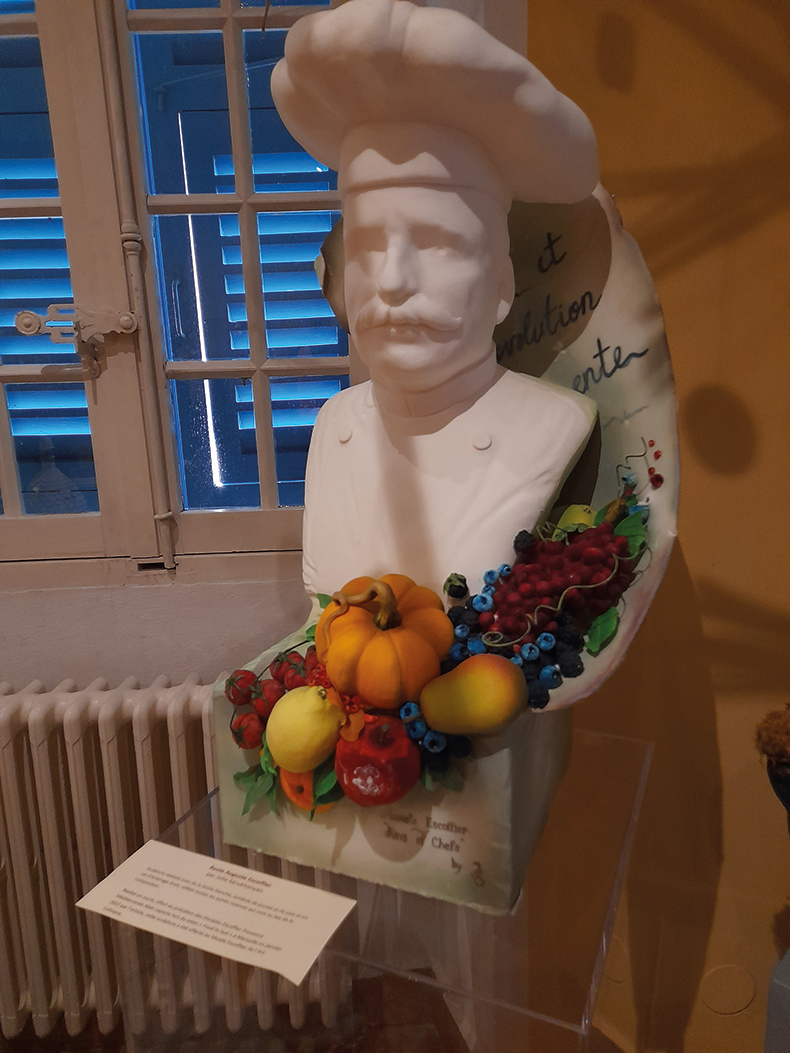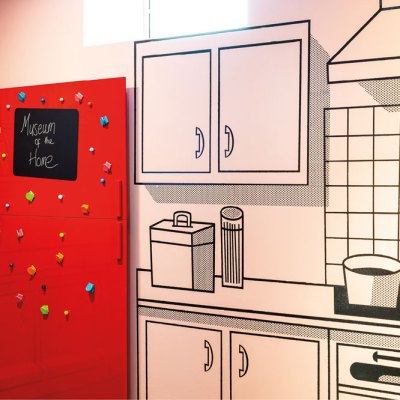From the October 2022 issue of Apollo. Preview and subscribe here.
Every house museum needs a hero. That usually means a writer, artist or composer; occasionally a politician makes the grade. An outlier is Auguste Escoffier, who is celebrated at the Musée Escoffier de l’Art Culinaire at his childhood home in Villeneuve-Loubet, a tidy Provençal village around 15 km west of Nice. To the best of my knowledge, it is the only house museum in the world to be dedicated to a chef.It is hardly surprising that Escoffier (1846– 1935) should hold this distinction. Outside the museum – a comfortable if undistinguished 18th-century house on a slope leading up to the castle – a plaque pays tribute to him as ‘Ambassadeur de la cuisine française’. Unlike most chefs, howsoever lionised in their day, Escoffier has a legacy that has endured even as culinary styles have come and gone. He remains a figurehead for the French cooking techniques that he championed and is still considered one of the foremost innovators of his profession. ‘Above all,’ the food critic Paul Levy has written, ‘[Escoffier] improved the working conditions and shaped the modern image of the chef.’
Escoffier achieved fame through his great hotel kitchens, among them the Savoy and the Carlton in London, and reinforced it with the publication of Le Guide Culinaire (1903), in which he set down 5,000 recipes for the benefit of apprentice chefs. He codified French cuisine, simplifying its baroque sauces and inventing many new dishes, often named after the celebrities of the day. The museum’s staff offer each visitor a pêche Melba on the way out – albeit not one served, as Escoffier’s was, between the wings of a swan sculpted from a block of ice.
Escoffier’s sheer longevity also contributed to his influence. Hundreds of the chefs who trained under him over the course of five decades went on to run their own kitchens and disseminate his lessons. To feed Henry Clay Frick, for instance, Escoffier dispatched Joseph Donon (1888–1982), who later became private chef to the renowned hostess Florence Vanderbilt Twombly. In 1966 the protégé repaid his master with the foundation of the museum dedicated to his memory.
A bust of Auguste Escoffier crafted from sugar, on display at the Musée Escoffier de l’Art Culinaire. Photo: courtesy Musée Escoffier de l’Art Culinaire

House museums are as likely to give the impression that their protagonist is absent as they are to conjure him or her as the presiding spirit of the place. The displays here are not designed to replicate the rooms that Escoffier grew up in, but they do gesture towards types of space that informed his life. There is a feel for his upbringing in the presentation of a Provençal-style kitchen in one gallery (in his posthumously published memoirs, Escoffier recalls his first culinary adventures as a boy, making coffee and ‘cheese toasts’ in secret). Another room evokes the famous hotel kitchens that he ran in partnership with César Ritz: a mannequin kitted out in chef ’s whites oversees a display that includes an imposing 19th-century piano de cuisson, copper kitchenware from the Savoy and contemporaneous machines for slicing potatoes and making breadcrumbs (Escoffier loved a gadget).
The collection is something of a hotch-potch, with its scattering of items that belonged to Escoffier – his writing desk, a pen that looks as though it might be made out of white chocolate – bulked out with memorabilia and period kitchen objects. If that feels a bit like commemorating a painter using someone else’s paintbrushes, then it is also in keeping with the selflessness of Escoffier as it is emphasised here (and with- out mention of the kickback scheme that prompted the Savoy’s owners to dismiss him in 1898). During his decades in London Escoffier ensured that excess food from his kitchens was donated to a charitable mis- sion. In 1910 he published a pamphlet calling for a national pension system to benefit retired workers.
The most coherent gallery here is that given over to historical restaurant menus, with around 100 displayed from a collection of some 2,000. The designs are fascinating in their own right – a card for lunch on a French steamboat in 1898, for instance, showing an elephant waiter popping a cork with its trunk – but the menus also serve to impress just how much Escoffier changed the experience of restauration. Through his hotel restaurants he became a key promoter of the à la carte dining that replaced the traditional table d’hôte service, in which all guests ate together in one sitting. He pioneered the prix fixe menu for diners who couldn’t make up their mind. He turned restaurants into glamourous destinations.
Escoffier could be a mischievous chef, devising playfully allegorical menus for private dinners – and at one banquet in London serving a dish of frog legs, in spite of the English aversion to them, disguised under the title Nymphes à l’Aurore. Perhaps he would have enjoyed the most surprising display here, of pastillage and chocolate sculptures, some decades old and depicting everything from the Sacré-Coeur to Pinocchio. Among the most recent is a bust of Escoffier himself. He looks serious but is made of sugar.
From the October 2022 issue of Apollo. Preview and subscribe here.


